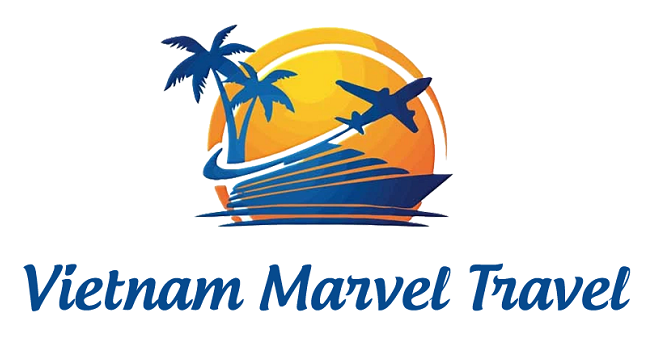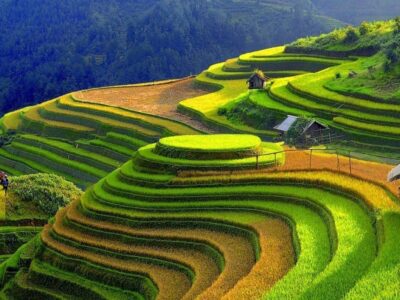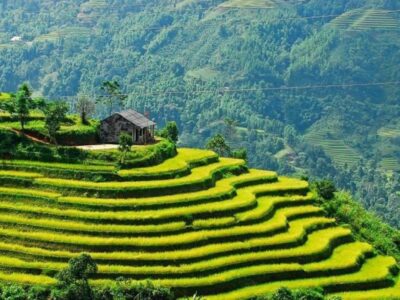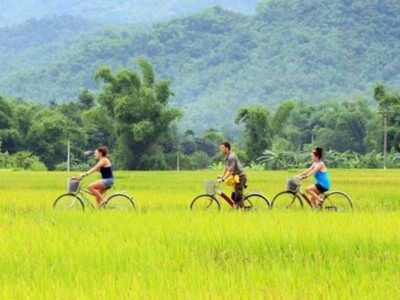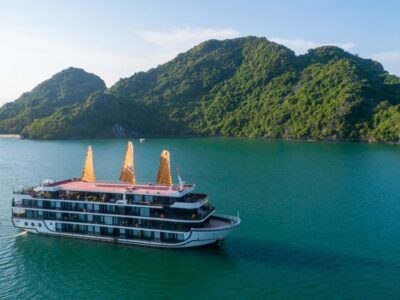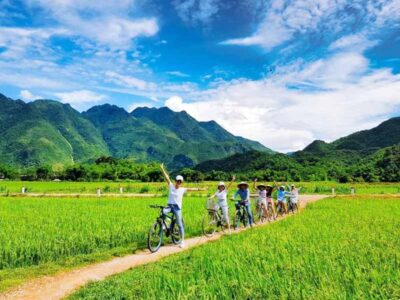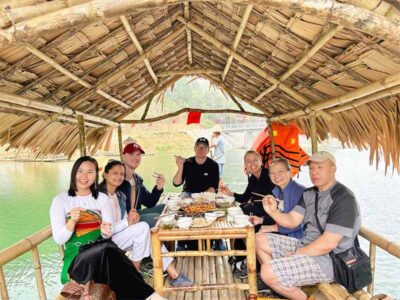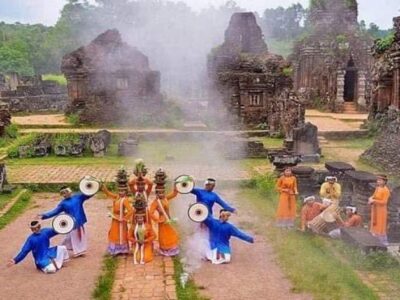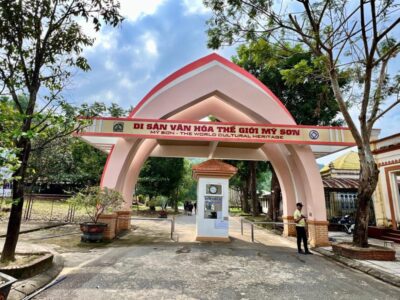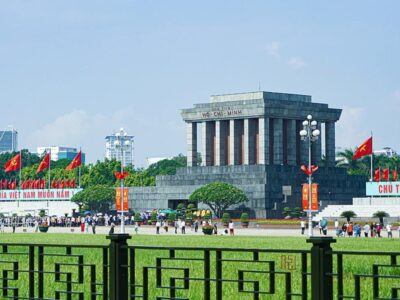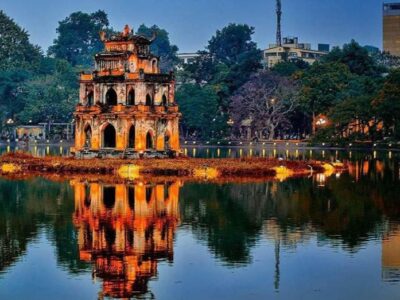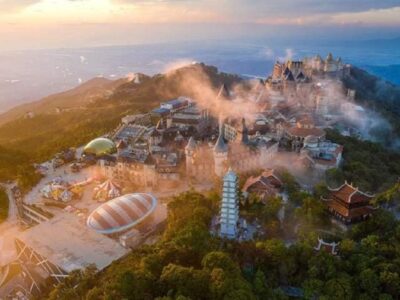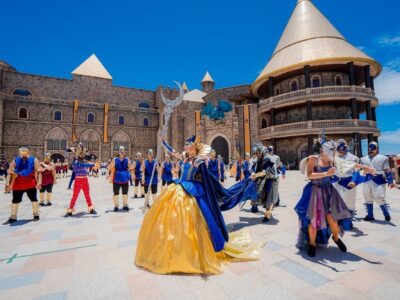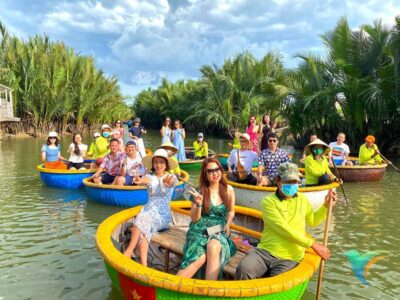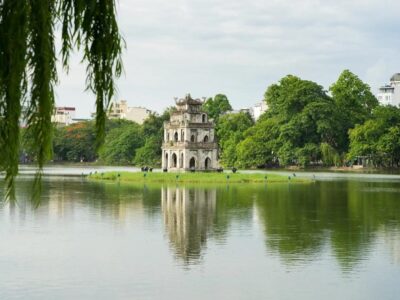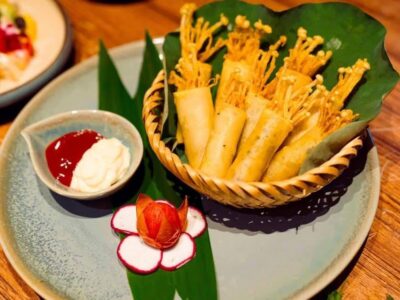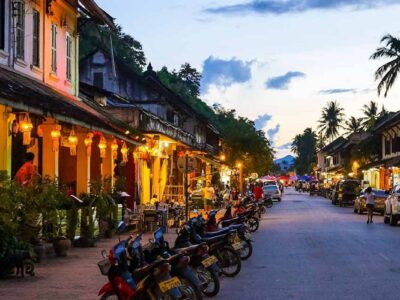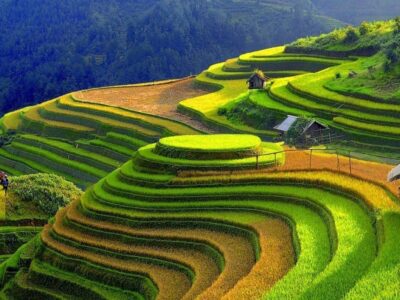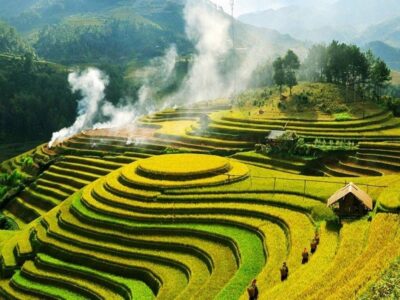Culture & Heritage Tours
Culture & Heritage Tours 2026-2027
Dive into Vietnam’s rich history with our Culture & Heritage Tours. Explore ancient temples, royal citadels, UNESCO sites, and traditional villages from North to South.
✅ Expert-led tours updated for 2025–2026
✅ Authentic experiences with local insights
✅ Ideal for history buffs and cultural explorers
Uncover Vietnam’s soul with Vietnam Marvel Travel today!
Culture & Heritage Tours in Vietnam – Vietnam Marvel Travel
Step into Vietnam’s Living History
Vietnam is a country where time flows differently — where ancient pagodas cast shadows over bustling markets, where royal citadels whisper stories of emperors, and where ethnic villages keep centuries-old traditions alive. At Vietnam Marvel Travel, our Culture & Heritage Tours are designed to immerse you in the beauty, history, and spirit of Vietnam.
We go beyond sightseeing. You’ll meet artisans in traditional craft villages, walk through UNESCO World Heritage towns, explore royal dynasties’ palaces, and share meals with ethnic families. Every experience is led by guides who are not just experts in history but storytellers passionate about preserving Vietnam’s identity.
Why Travelers Love Vietnam Marvel Travel’s Culture & Heritage Tours
-
Deep Cultural Immersion – Learn local customs, rituals, and crafts directly from the communities who practice them.
-
Authentic Local Access – We take you beyond the tourist trail to places only locals know.
-
Expert-Led Journeys – Our guides are historians, anthropologists, and cultural ambassadors.
-
Sustainable Tourism – We partner with local communities to preserve heritage and traditions.
Top Cultural & Heritage Experiences in Vietnam
1. Hanoi’s Timeless Old Quarter
Explore winding alleys, visit the Temple of Literature, admire French colonial architecture, and sip traditional egg coffee at hidden cafés. Keywords: Hanoi culture tour, Hanoi Old Quarter walking tour, Hanoi temple tour, Hanoi historical sites.
2. Imperial Hue – The Royal Capital
Discover the UNESCO-listed Imperial Citadel, royal tombs, and ancient pagodas while listening to Hue court music. Keywords: Hue heritage tour, Hue Imperial City tour, Hue royal tombs, Vietnam UNESCO heritage sites.
3. Hoi An Ancient Town
Wander through lantern-lit streets, join a silk weaving workshop, and learn traditional lantern making. Keywords: Hoi An culture tour, Hoi An heritage walk, Hoi An traditional craft tour, Hoi An UNESCO World Heritage.
4. My Son Sanctuary
Step into the spiritual heart of the ancient Cham civilization, surrounded by jungle-clad ruins. Keywords: My Son Sanctuary tour, Cham culture Vietnam, Vietnam ancient temples tour.
5. Ethnic Village Encounters
Visit Sapa, Ha Giang, and Mai Chau to meet the Hmong, Dao, Tay, and Thai communities. Keywords: Vietnam ethnic village tour, Sapa culture tour, Ha Giang heritage travel.
6. Mekong Delta Cultural Life
Glide through floating markets, visit traditional music performances, and taste coconut candy in Ben Tre. Keywords: Mekong Delta culture tour, Vietnam floating market tour, southern Vietnam heritage trip.
Culture & Heritage Tours in Vietnam: 15 Unmissable Experiences for 2025 Travelers
Vietnam’s tapestry of ancient traditions, diverse ethnic cultures, and UNESCO-recognized heritage sites offers travelers an unparalleled journey through time. From the mystical limestone karsts of Halong Bay to the lantern-illuminated streets of Hoi An, the country’s cultural landscape provides authentic experiences that captivate the senses and enrich the soul.
What Makes Vietnamese Cultural Tours Special in 2025?
Vietnam’s cultural tourism scene has evolved dramatically by 2025, blending traditional experiences with modern accessibility. Cultural tours here aren’t merely about sightseeing—they provide immersive windows into Vietnam’s complex heritage and living traditions.
The appeal of these tours stems from their ability to:
- Transport you through 2,000+ years of documented history spanning Chinese occupation, French colonization, and indigenous development
- Introduce you to 54 distinct ethnic groups, each with unique customs, clothing, and traditions
- Guide you through 8 UNESCO World Heritage Sites that showcase Vietnam’s cultural and natural wonders
- Immerse you in regional cuisine that combines Chinese techniques, French influences, and local ingredients
- Connect you with living cultural practitioners who maintain ancient skills like water puppetry, silk weaving, and traditional medicine
According to the Vietnam National Administration of Tourism, cultural tourism grew by 34% in 2024, making it the fastest-expanding sector in Vietnamese tourism for 2025.
15 Must-Experience Cultural Destinations in Vietnam
1. The Ancient Quarter of Hanoi
Hanoi’s 1,000-year-old Old Quarter represents Vietnam’s beating cultural heart. Its 36 guild streets (each named after the goods once sold there) create a labyrinth of cultural exploration opportunities.
Cultural highlights include:
- The Temple of Literature (Van Mieu), Vietnam’s first national university established in 1070
- Thang Long Imperial Citadel, a UNESCO site showcasing royal Vietnamese architecture
- Traditional water puppet performances at Thang Long Water Puppet Theater, a 300-year-old art form
- French colonial architecture including the Opera House and St. Joseph’s Cathedral
Insider tip: Visit the Old Quarter early on weekend mornings when streets around Hoan Kiem Lake become pedestrianized and fill with traditional games, music performances, and cultural demonstrations.
2. Halong Bay’s Floating Cultural Heritage
Beyond the breathtaking limestone karsts, Halong Bay harbors centuries-old floating communities that maintain unique maritime traditions.
Cultural experiences include:
- Visiting Cua Van Floating Village, home to approximately 700 residents living entirely on water
- Learning about traditional fishing techniques passed down for generations
- Exploring Dau Go Cave (Wooden Stakes Cave) tied to Vietnam’s resistance against Mongol invasions
- Witnessing the floating market economy where goods and services are exchanged by boat
Explore Halong Bay’s cultural wonders on luxury overnight cruises
Local insight: The bay’s name “Halong” translates to “descending dragon” from an ancient legend where dragons spat jewels that formed the islands to protect Vietnam from invaders.
3. Imperial Grandeur in Hue
As Vietnam’s imperial capital from 1802-1945, Hue preserves the most extensive complex of royal architecture in the country.
Cultural treasures include:
- The Imperial Citadel, a vast 520-hectare complex housing the Forbidden Purple City
- Royal Tombs of the Nguyen Dynasty including Tu Duc, Minh Mang, and Khai Dinh mausoleums
- Traditional imperial cuisine with over 1,700 documented royal recipes
- Thien Mu Pagoda (Celestial Lady Pagoda), Hue’s unofficial symbol dating from 1601
Historical context: Hue’s monuments suffered extensive damage during the American War but have undergone careful restoration since UNESCO recognition in 1993.
4. Ancient Trading Port of Hoi An
Hoi An’s remarkably preserved Old Town showcases a unique fusion of indigenous and foreign influences from its days as a bustling 15th-19th century trading port.
Cultural attractions include:
- The iconic Japanese Covered Bridge constructed in the 1590s
- Ancient merchant houses like Tan Ky House (maintained by the same family for seven generations)
- Traditional craft streets specializing in lantern-making, tailoring, and woodcarving
- Chinese assembly halls built by merchant groups from different Chinese provinces
Unique experience: Participate in a traditional lantern-making workshop and release your creation onto the Thu Bon River during the monthly Full Moon Festival.
5. Ethnic Diversity in Sapa’s Highlands
The terraced mountains of Sapa showcase Vietnam’s remarkable ethnic diversity, home to H’mong, Red Dao, Tay, Giay, and other minority groups maintaining distinct cultural identities.
Cultural encounters include:
- Homestay experiences with local families in traditional stilt houses
- Bac Ha Sunday Market where ethnic minorities gather to trade goods and socialize (the largest ethnic market in Northern Vietnam)
- Learning about traditional indigo dyeing and hemp weaving techniques
- Participating in rice cultivation practices that have shaped the landscape for centuries
Local perspective: Many H’mong women learn English not in school but through interactions with tourists, developing impressive language skills through informal practice.
6. Ninh Binh: Vietnam’s Ancient Heartland
Often called “Halong Bay on Land,” Ninh Binh served as Vietnam’s first capital and remains a center of spiritual significance.
Cultural sites include:
- Hoa Lu Ancient Capital with temples honoring the Dinh and Le dynasties
- Bai Dinh Pagoda Complex, Southeast Asia’s largest Buddhist complex covering 700 hectares
- Trang An Landscape Complex, a UNESCO site featuring temple-adorned karst mountains
- Traditional sampan boat rides through cave systems and to isolated temples
Historical significance: Hoa Lu served as a strategic defensive capital in the 10th-11th centuries, surrounded by limestone mountains that protected against Chinese invasions.
7. Mekong Delta’s River Civilization
The fertile Mekong Delta showcases a distinctive water-based culture where life revolves around the river’s rhythms.
Cultural experiences include:
- Floating markets like Cai Rang and Phong Dien where commerce happens entirely on water
- Traditional craft villages specializing in coconut candy, rice paper, and pottery
- Khmer minority communities with unique Buddhist temples unlike those elsewhere in Vietnam
- Ca Tru singing performances, a UNESCO-recognized form of ancient court music
Ecological context: The Mekong Delta produces over 50% of Vietnam’s agricultural output and has developed unique cultural adaptations to seasonal flooding.
8. Sacred Mountains of Yen Tu
Yen Tu Mountain represents one of Vietnam’s most important Buddhist pilgrimage sites and the birthplace of the Truc Lam Zen Buddhist sect.
Cultural highlights include:
- The Bronze Pagoda at the summit (1,068 meters) dating from the 13th century
- Ancient stone pathways carved by monks over centuries
- Traditional Buddhist vegetarian cuisine served at monastery kitchens
- Annual pilgrimage festivals attracting thousands of devotees
Historical context: King Tran Nhan Tong abdicated his throne in 1299 to become a Buddhist monk and established the uniquely Vietnamese Truc Lam Zen sect here.
9. Ancient Pottery Village of Bat Trang
Just outside Hanoi, Bat Trang Village has maintained ceramic traditions for over 700 years, producing distinctive blue-and-white pottery.
Cultural experiences include:
- Pottery workshops where visitors can try their hand at the wheel
- Traditional kiln operations using techniques passed through generations
- Ceramic painting classes learning traditional Vietnamese motifs
- Family workshops where entire families participate in different stages of production
Artisan insight: Traditional Bat Trang pottery uses a special clay from the Red River that creates its distinctive durability and appearance.
10. My Son Sanctuary’s Hindu Legacy
This remarkable archaeological site showcases the Hindu-influenced Champa civilization that once controlled central Vietnam.
Cultural features include:
- 72 tower-temples built between the 4th and 13th centuries
- Sanskrit inscriptions providing insights into Champa religious practices
- Intricate stone carvings depicting Hindu deities and mythological scenes
- Traditional Cham dance performances staged for cultural preservation
Archaeological note: My Son represents the longest continuous development of any major archaeological site in Southeast Asia, spanning nearly 10 centuries of continuous construction.
11. Co Tu Cultural Villages of Central Highlands
The Co Tu ethnic minority maintains some of Vietnam’s most distinctive cultural traditions in villages throughout Quang Nam province.
Cultural highlights include:
- Guol community houses with distinctive high-peaked roofs reaching 30+ meters
- Traditional buffalo sacrifice ceremonies performed during major festivals
- Xoang dance rituals where participants mimic animal movements
- Zara singing traditions unique to Co Tu communities
Cultural preservation: Several Co Tu villages now operate community-based tourism initiatives that support cultural preservation while providing economic opportunities.
12. Duong Lam Ancient Village
This remarkably preserved ancient village near Hanoi features traditional architecture dating back to the 17th century.
Cultural attractions include:
- Laterite brick houses over 400 years old still inhabited by descendants of original families
- Ancient communal houses (Dinh) featuring intricate wood carvings
- Traditional agricultural practices including water buffalo plowing and rice cultivation
- Ancient wells and gates marking the village’s historical boundaries
Architectural significance: Duong Lam houses use distinctive laterite and mud bricks that maintain cool temperatures year-round without modern climate control.
13. Perfume Pagoda Pilgrimage Site
This complex of Buddhist temples built into the Huong Tich mountains represents one of Vietnam’s most important spiritual destinations.
Cultural experiences include:
- Traditional sampan boat journeys along the Yen Stream to reach the site
- Cave temples carved into the mountainside including the main Huong Tich Cave
- Annual pilgrimage festival following Tet (Lunar New Year) attracting thousands
- Traditional vegetarian feasts served at pagoda kitchens
Spiritual significance: Pilgrims believe that praying at the Perfume Pagoda brings particularly favorable outcomes for the coming year, especially regarding fertility and prosperity.
14. Dao Do Cultural Villages of Ha Giang
The remote Ha Giang province borders China and hosts distinctive Red Dao communities with unique cultural practices.
Cultural highlights include:
- Elaborate embroidery traditions with patterns indicating marital status and clan affiliation
- Traditional herbal baths using secret family medicinal plant recipes
- Coming-of-age ceremonies involving distinctive face-shaving rituals for women
- Sacred forest conservation practices maintaining ancient spiritual connections
Preservation context: The Red Dao maintain one of the most comprehensive traditional pharmacopeias in Vietnam with over 400 medicinal plants documented and used regularly.
15. Con Dao’s Historical Memory Sites
Beyond beautiful beaches, Con Dao Island preserves powerful historical sites related to its past as a French colonial prison.
Cultural sites include:
- Con Dao Prison Complex where Vietnamese revolutionaries were incarcerated
- Hang Duong Cemetery with the grave of national heroine Vo Thi Sau
- Traditional Phi Yen Temple connected to the wife of Emperor Gia Long
- Annual memorial ceremonies honoring those who died in the prison system
Historical perspective: Over 20,000 prisoners died in Con Dao’s prison system during French colonial rule, making these sites crucial to understanding Vietnam’s independence struggle.
Best Time to Experience Cultural Tours in Vietnam (2025 Climate Guide)
Vietnam’s elongated geography creates distinct climate zones that affect cultural experiences. Here’s a comprehensive breakdown to help you plan:
Northern Vietnam (Hanoi, Halong Bay, Sapa)
- Spring (February-April): 18-23°C with moderate humidity and occasional light rain. Ideal for cultural festivals including Perfume Pagoda Festival and Hung Kings Festival.
- Autumn (September-November): 20-25°C with low humidity and clear skies. Perfect for photography of cultural sites and comfortable trekking to ethnic villages.
- Avoid: Summer (May-August) brings temperatures of 32-35°C with 80-90% humidity, making cultural exploration uncomfortable.
Central Vietnam (Hue, Hoi An, Da Nang)
- Dry Season (February-July): 25-32°C with moderate humidity. Optimal for exploring outdoor heritage sites and cultural performances.
- Festival Season (April-June): Hue Festival (biennial, next in April 2025) and Quang Nam Heritage Festival showcase traditional performances.
- Avoid: October-November when rainfall can reach 550mm per month, sometimes causing flooding in Hoi An’s Ancient Town.
Southern Vietnam (Ho Chi Minh City, Mekong Delta)
- Dry Season (December-April): 25-35°C with lower humidity. Ideal for floating market visits and outdoor cultural experiences.
- Tet Holiday (January-February 2025): While crowded, this period offers unparalleled cultural immersion in Vietnam’s most important festival.
- Avoid: Peak rainy season (September-October) when afternoon downpours can disrupt cultural tours with 250mm+ monthly rainfall.
Highlands (Dalat, Central Highlands)
- Dry Season (November-March): 15-24°C with cool evenings. Perfect for ethnic minority village visits without muddy conditions.
- Coffee Harvest Season (October-December): Experience traditional coffee cultivation practices among ethnic communities.
- Avoid: April-October rainy season makes some remote cultural sites difficult to access.
Climate-savvy planning tip: For a comprehensive cultural tour covering multiple regions, March-April and October-November offer the best compromise between northern and southern weather patterns in 2025.
Essential Packing for Cultural Immersion in Vietnam
Preparing properly enhances your cultural experience while showing respect for local customs:
Clothing Essentials
- Modest attire: Shirts covering shoulders and pants/skirts below knees for temple visits (required at sites like Thien Mu Pagoda and Bai Dinh)
- Quick-dry fabrics: Lightweight cotton or technical fabrics that handle humidity in southern regions
- Layering options: Temperature variations in northern areas (Sapa can drop to 10°C in winter mornings)
- Comfortable walking shoes: Heritage sites like Hue Citadel require 3-4 hours of exploration on foot
- Traditional accessories: A non-plastic fan and light scarf serve multiple purposes (sun protection, temple cover-ups)
Cultural Respect Items
- Temple-specific supplies: Socks for sites requiring shoe removal; small denominations for donation boxes
- Photography notebook: Document permission when photographing ethnic minorities (especially in Sapa where some H’mong communities prefer not to be photographed)
- Small gifts: If visiting homestays, consider useful items like school supplies or household goods rather than candy
Practical Technology
- Power adapter: Vietnam uses type A/C outlets (220V)
- Offline translation app: Google Translate with Vietnamese downloaded for offline use
- VPN service: For accessing social media platforms to share cultural experiences
Health & Comfort
- Natural mosquito repellent: Essential for Mekong Delta cultural sites and evening performances
- Portable fan: For heritage sites without air conditioning during hot months
- Antibacterial hand gel: Before sampling street foods during culinary cultural tours
- Rehydration salts: Maintain electrolyte balance while exploring in humid conditions
Packing insight from travelers: A lightweight day backpack with rain cover proves invaluable for carrying temple-appropriate clothing changes and protecting cameras during sudden seasonal showers.
Traditional Vietnamese Cuisine to Experience on Cultural Tours
Vietnamese cuisine itself represents a cultural heritage worth exploring, with distinct regional variations:
Northern Culinary Treasures
- Pho Hanoi: The original beef noodle soup with a clearer, more delicate broth than southern versions
- Bun Cha: Grilled pork patties with vermicelli, herbs and dipping sauce—Obama and Bourdain’s famous meal choice
- Cha Ca La Vong: Turmeric-marinated fish with dill, served tableside on portable burners at the 150-year-old original restaurant
- Egg Coffee (Ca Phe Trung): A Hanoi specialty developed during milk shortages with whipped egg yolk creating a custard-like topping
Central Vietnam’s Royal Cuisine
- Bun Bo Hue: Spicy beef noodle soup with lemongrass and fermented shrimp paste
- Banh Khoai: Hue’s savory crispy pancakes with shrimp, pork and bean sprouts
- Com Hen: Baby clams with rice, peanuts, and herbs—a humble dish with complex flavors
- Banh Beo: Steamed rice cakes topped with dried shrimp and crispy pork rinds, served in small ceramic dishes
Hoi An Specialties
- Cao Lau: Uniquely textured noodles made with water from ancient Ba Le well, served with pork and local herbs
- White Rose Dumplings (Banh Vac): Translucent shrimp dumplings shaped like flowers, made by just one family in Hoi An
- Mi Quang: Turmeric-infused noodles with minimal broth, shrimp, pork, and crushed peanuts
- Banh Mi Phuong: Anthony Bourdain’s favorite sandwich shop, creating the perfect fusion of French and Vietnamese elements
Southern and Mekong Flavors
- Banh Xeo: Sizzling rice flour crepes with pork, shrimp and bean sprouts
- Hu Tieu Nam Vang: Chinese-influenced noodle soup with multiple protein options
- Canh Chua Ca: Sour tamarind soup with fish and tropical fruits
- Banh Tet: Cylindrical sticky rice cakes with pork and mung bean fillings, traditional during Tet celebrations
Ethnic Minority Specialties
- Thang Co: H’mong horse meat soup with distinctive herbs and spices (Sapa region)
- Com Lam: Sticky rice cooked in bamboo tubes over fire (highland ethnic groups)
- Ruou Can: Rice wine drunk communally through bamboo straws from a shared jar (Central Highland ceremonies)
- Seven-color sticky rice: Made by Red Dao people using natural plant dyes for ceremonial occasions
Culinary cultural tip: Many dishes incorporate symbolic elements—for example, the crescent-shaped Banh Dau Xanh (mung bean cakes) from Hai Duong represent the moon and are traditionally exchanged during Mid-Autumn Festival.
Discover Vietnam’s culinary diversity on a 14-day cultural journey
Trusted Reviews: What Cultural Travelers Say About Vietnam (2025)
Recent verified reviews highlight the transformative nature of Vietnam’s cultural experiences:
Halong Bay Cultural Cruises
★★★★★ 4.9/5 (based on 1,782 verified reviews in 2025)
“The overnight cruise through Halong Bay was magical, but what made it extraordinary was our guide’s storytelling about the bay’s legends. Learning about the floating villages while actually meeting residents gave me a much deeper appreciation than just seeing the scenery.”
— Maria G., Spain (April 2025)
Hoi An Cultural Immersion
★★★★★ 4.8/5 (based on 2,340 verified reviews in 2025)
“Hoi An exceeded all expectations. The Ancient Town feels like stepping back centuries, but it’s the lantern-making workshop with Mrs. Hoa’s family that created my most precious memory. Their family has made lanterns for 8 generations, and they shared techniques dating back to the 16th century.”
— David L., Australia (February 2025)
Sapa Ethnic Homestays
★★★★☆ 4.7/5 (based on 1,456 verified reviews in 2025)
“Staying with a Red Dao family in their traditional home above the rice terraces was the highlight of my Vietnam trip. We harvested herbs for dinner, learned traditional embroidery, and shared stories through their teenage daughter who translated. Just be prepared for basic accommodations—the cultural authenticity more than compensates.”
— Johanna B., Germany (March 2025)
Hue Imperial Heritage Tour
★★★★★ 4.8/5 (based on 1,890 verified reviews in 2025)
“The guided tour of Hue’s Imperial City and royal tombs provided incredible historical context. Our guide was actually descended from Nguyen Dynasty courtiers and shared family stories passed down through generations. The royal cuisine cooking class completed the immersive historical experience.”
— Thomas K., Canada (November 2024)
Industry recognition: Vietnam’s cultural tourism sector received the prestigious “World’s Leading Heritage Destination 2024” award at the World Travel Awards, marking its third consecutive win in this category.
2025 Cultural Festivals Worth Planning Your Trip Around
Vietnam’s festival calendar provides extraordinary opportunities to witness living traditions:
Tet Nguyen Dan (Lunar New Year)
- 2025 Dates: February 17-25 (Year of the Snake)
- Cultural significance: Vietnam’s most important holiday celebrating family reunion and ancestral remembrance
- Key experiences: Flower markets in Hanoi and Ho Chi Minh City, ancestral altar ceremonies, traditional Tet foods including Banh Chung (square sticky rice cakes)
- Visitor tip: Book accommodations 3+ months in advance as domestic travel peaks during this period
Perfume Pagoda Festival
- 2025 Dates: February-March (6th day of 1st lunar month through 3rd lunar month)
- Cultural significance: Vietnam’s largest Buddhist pilgrimage attracting thousands of devotees
- Key experiences: Boat journey along Yen Stream, mountain hiking to sacred caves, prayer ceremonies for prosperity
- Visitor note: February 25, 2025 marks the festival peak with the most elaborate ceremonies
Hue Festival
- 2025 Dates: April 1-6
- Cultural significance: Biennial celebration of Hue’s imperial heritage with international participation
- Key experiences: Royal court reenactments, traditional Nha Nhac court music (UNESCO Intangible Heritage), ao dai processions, royal banquets
- Visitor insight: The Nam Giao Offering Ceremony on April 3, 2025 recreates the emperor’s most important ritual with 500+ participants in historical costumes
Hoi An Lantern Festival
- 2025 Dates: Monthly on full moon (14th day of lunar month)
- Cultural significance: Represents the harmonization of Chinese, Japanese and Vietnamese cultural elements
- Key experiences: Release of floating lanterns on Thu Bon River, folk games, traditional music performances, all electric lights in Ancient Town switched off
- Photography tip: The January 13, 2025 festival coincides with Vietnamese Valentine’s Day (7th lunar month) creating particularly spectacular scenes
Hung Kings Festival
- 2025 Dates: April 28-30 (10th day of 3rd lunar month)
- Cultural significance: National holiday honoring Vietnam’s founding monarchs dating back to 2879 BCE
- Key experiences: Procession of offerings to Hung Temple in Phu Tho Province, traditional Xoan singing, bánh chưng cooking competitions
- Historical context: This represents Vietnam’s oldest continuous cultural celebration, maintained for over 2,000 years
Kate Festival (Cham New Year)
- 2025 Dates: October 14-16
- Cultural significance: Major celebration of Vietnam’s Cham minority, descendants of the Champa civilization
- Key experiences: Tower ceremonies at Po Nagar Temple (Nha Trang), traditional Ginang dance performances, Cham costume displays
- Cultural insight: This festival provides rare access to living Cham culture that once dominated central Vietnam for nearly 1,000 years
Cultural Respect: Etiquette Tips for Meaningful Interactions
Understanding Vietnamese cultural norms enhances your experience and shows respect:
Temple and Pagoda Etiquette
- Remove shoes when required (look for shoe racks or locals’ examples)
- Walk clockwise around Buddha statues and sacred objects
- Never point feet toward altars or Buddha images (considered highly disrespectful)
- Speak quietly and avoid public displays of affection
- Ask permission before photographing monks or ceremonies
Social Interactions
- Greet with a slight bow and hands pressed together in prayer position for more traditional contexts
- Use both hands when giving or receiving anything from elders or monks
- Address people using appropriate honorifics (“ông” for older men, “bà” for older women)
- Remove shoes when entering someone’s home
- Accept food and drink offerings from hosts (even if just a small taste)
Ethnic Minority Community Visits
- Ask permission before photographing people (particularly important with H’mong communities)
- Purchase handicrafts directly from artisans rather than just photographing their work
- Respect private ceremonies – some traditions are not meant for outsiders
- Learn a few words in local dialect (beyond Vietnamese) when staying in ethnic villages
- Follow local dress codes – cover shoulders in Dao communities, remove jewelry when entering some Jarai longhouses
Photography Considerations
- Vietnam’s living heritage involves real people, not museum exhibits
- Seek permission through gestures if language barrier exists
- Offer to share photos via email or by showing the image you’ve taken
- Some sites prohibit photography (particularly certain temple interiors)
- Pay photography fees where applicable (some ethnic villages have established community funds)
Cultural insight: The concept of “saving face” remains vitally important in Vietnamese culture. Avoid public criticism or arguments, as maintaining harmony outwardly is considered essential to social cohesion.
Sustainable Cultural Tourism: Supporting Vietnamese Heritage
Responsible cultural tourism helps preserve traditions for future generations:
Community-Based Tourism Initiatives
- Yen Duc Village (near Halong Bay) where residents operate traditional farming demonstrations
- Ta Phin Village (Sapa) with Red Dao community-managed homestay network
- Thanh Toan Village (near Hue) preserving agricultural heritage through visitor programs
- Tra Que Vegetable Village (Hoi An) teaching traditional organic farming methods
- Ma Chau Silk Village (Quang Nam) maintaining traditional silk production techniques
Cultural Preservation Through Tourism
- Patronize traditional craft workshops where techniques are being passed to younger generations
- Attend authentic performances rather than shortened “tourist versions” of traditional arts
- Purchase ethically-produced handicrafts directly from artisans
- Participate in cooking classes that document traditional recipes
- Support museums and heritage conservation efforts through entrance fees
Explore sustainable cultural experiences on a 7-day Northern Vietnam journey
Environmental Considerations for Cultural Sites
- Many heritage sites face climate change threats including flooding in Hoi An and erosion at Cham sites
- Follow designated paths at archaeological sites like My Son Sanctuary
- Choose tour operators with clear sustainability policies
- Minimize plastic waste at rural cultural destinations with limited waste management
- Support restoration through authorized donation channels
Preservation insight: Several previously endangered traditional art forms including Tuồng classical drama and Xoan singing have been revitalized through cultural tourism interest, with young Vietnamese now studying these forms again.
Planning Your Vietnam Cultural Heritage Journey
Recommended Cultural Itineraries for 2025
5-Day Northern Cultural Immersion
- Day 1: Hanoi’s Ancient Quarter and Temple of Literature
- Day 2: Duong Lam Ancient Village and Vietnamese Folk Music performance
- Day 3-4: Halong Bay overnight cruise with floating village visit
- Day 5: Bat Trang pottery village workshop and Water Puppet performance
8-Day Central Vietnam Heritage Trail
- Days 1-2: Hue Imperial City, Royal Tombs, and Perfume River cruise
- Days 3-4: Hoi An Ancient Town, lantern workshop, and countryside bicycle tour
- Day 5: My Son Sanctuary with Cham cultural performance
- Days 6-7: Phong Nha Cave systems with minority village visits
- Day 8: Vinh Moc Tunnels historical site
12-Day Comprehensive Cultural Journey
- Days 1-3: Hanoi and surroundings (including traditional craft villages)
- Days 4-5: Sapa ethnic minority communities and markets
- Day 6: Halong Bay cruise with cultural experiences
- Days 7-8: Hue’s imperial heritage
- Days 9-10: Hoi An’s trading port history
- Days 11-12: Ho Chi Minh City with Mekong Delta cultural excursion
Practical Planning Tips
Visa Considerations (Updated for 2025)
- E-visa availability: 80+ nationalities now eligible for 30-day e-visas
- Visa processing time: 3-5 business days standard (expedited 24-hour service available)
- Multiple-entry options: Now available for cultural tours visiting both northern and southern regions with exits to Cambodia or Laos
- Visa extension: Possible to extend in-country for cultural programs exceeding 30 days
Transportation Between Cultural Sites
- High-speed rail: The new North-South railway connects Hanoi-Hue-Da Nang with dedicated “Cultural Heritage” carriages featuring educational displays
- Domestic flights: 22 airports now operating with improved connections to cultural destinations
- Private transfers: Recommended for reaching remote ethnic minority villages
- River travel: Traditional boat journeys remain the authentic way to access sites like Perfume Pagoda and Mekong Delta communities
Accommodation with Cultural Significance
- Heritage hotels: Colonial-era properties like Sofitel Legend Metropole (Hanoi) and Imperial Hotel (Hue)
- Converted ancient houses: Hoi An’s old merchant homes transformed into boutique accommodations
- Community-based homestays: Ethnic minority family homes in Sapa, Mai Chau, and Ha Giang
- Monastery stays: Several Buddhist pagodas now offer simple overnight accommodations for cultural pilgrims
Final Thoughts: The Transformative Power of Vietnamese Cultural Tourism
Vietnam’s cultural landscape offers far more than photogenic scenery—it provides a journey through millennia of human creativity, spiritual expression, and resilience. The country’s remarkable diversity of traditions, from imperial grandeur to ethnic minority wisdom, creates a tapestry of experiences that transform visitors’ understanding of Southeast Asian heritage.
As we move further into the 2020s, Vietnam continues to balance preservation with accessibility, allowing travelers to witness living traditions while supporting their continuation. The cultural connections formed—whether learning family recipes from a Hue descendant of royal chefs or joining ethnic Tay villagers for their harvest festival—create the kind of authentic understanding that defines truly meaningful travel.
For those seeking more than standard tourist experiences, Vietnam’s culture and heritage tours reveal the soul of this remarkable nation, one ancient tradition, family story, and local encounter at a time.
Ready to experience Vietnam’s cultural wonders? Book your tailored Culture & Heritage Tour with expert local guides today.
Key Cultural Tour Search Terms for 2025:
- Vietnam UNESCO heritage tours
- Authentic Vietnamese cultural experiences
- Traditional craft village tours Vietnam
- Ethnic minority homestay Vietnam
- Imperial heritage tour Hue Vietnam
- Halong Bay cultural cruise packages
- Hoi An ancient town guided tours
- Vietnamese cooking class cultural experience
- Traditional arts performances Vietnam
- Buddhist temple tours Vietnam
- Lunar New Year festival tours 2025
- Family-friendly cultural tours Vietnam
- Luxury heritage hotels Vietnam
- Sustainable cultural tourism Vietnam
- Photography tours Vietnamese culture
· Top 100 Highlight – Culture & Heritage Tours Vietnam
- Vietnam culture tours
- Vietnam heritage tours
- Cultural tours in Vietnam
- Vietnam historical tours
- Vietnam UNESCO sites tour
- Vietnam cultural travel packages
- Best culture tours in Vietnam
- Private culture tours Vietnam
- Vietnam heritage travel agency
- Vietnam cultural holiday packages
- Hanoi culture tour
- Hanoi Old Quarter walking tour
- Hanoi historical sites tour
- Hue heritage tour
- Hue Imperial City tour
- Hoi An culture tour
- Hoi An ancient town tour
- My Son Sanctuary tour
- Sapa cultural tour
- Ha Giang ethnic tour
- Vietnam traditional craft villages tour
- Vietnam lantern making workshop
- Vietnam silk weaving tour
- Vietnam cooking and culture tour
- Vietnam traditional dress photography
- Vietnam folk music tour
- Vietnam royal history tour
- Vietnam temple and pagoda tour
- Vietnam historical architecture tour
- Vietnam war history tour
- Hue UNESCO heritage tour
- Hoi An UNESCO heritage walk
- My Son UNESCO world heritage
- Vietnam UNESCO heritage trip
- Vietnam heritage towns tour
- Vietnam ancient temples tour
- Vietnam historical monuments tour
- Vietnam heritage photography tour
- Vietnam cultural landscape tour
- Vietnam world heritage travel
- Vietnam cultural festival tour
- Tet festival tour Vietnam
- Mid-Autumn festival tour Vietnam
- Hue Festival tour Vietnam
- Vietnam folk festival travel
- Vietnam traditional dance tour
- Vietnam cultural performance tour
- Vietnam art and culture holiday
- Vietnam festival and heritage tour
- Vietnam traditional music show
- Private heritage tours Vietnam
- Luxury culture tours Vietnam
- Family-friendly culture tours Vietnam
- Small group cultural tours Vietnam
- Best heritage tours in Vietnam for couples
- Vietnam culture and food tour
- Vietnam cooking class and heritage tour
- Vietnam art and architecture tour
- Vietnam religious heritage tour
- Vietnam ancient palace tour
- Hanoi heritage and street food tour
- Hue royal tombs tour
- Hoi An lantern festival tour
- My Son history and photography tour
- Sapa ethnic village homestay
- Ha Giang minority culture tour
- Mai Chau traditional dance tour
- Mekong Delta cultural boat tour
- Vietnam floating market and heritage tour
- Ben Tre coconut candy village tour
- Vietnam pottery village tour
- Vietnam traditional market tour
- Vietnam ancient citadel tour
- Vietnam royal costume experience
- Vietnam traditional weaving workshop
- Vietnam wood carving village tour
- Vietnam historical walking tour
- Vietnam ancient town photography tour
- Vietnam culture travel packages 14 days
- Vietnam culture honeymoon package
- Vietnam heritage cruise
- Vietnam culture and adventure tour
- Vietnam culture and wellness retreat
- Vietnam tea plantation cultural tour
- Vietnam coffee culture tour
- Vietnam historical battlefield tour
- Vietnam literature and heritage tour
- Vietnam ancient city tour
- Vietnam Buddhist heritage tour
- Vietnam Cham culture tour
- Vietnam French colonial architecture tour
- Vietnam traditional medicine tour
- Vietnam cultural cycling tour
- Vietnam rural culture tour
- Vietnam handicraft shopping tour
- Vietnam music and dance experience
- Vietnam embroidery village tour
- Vietnam calligraphy workshop
- Vietnam cultural volunteer tour
- Vietnam slow travel heritage experience
Top Tour Travelers Choice
Vietnam culture tours, Vietnam heritage tours, Hanoi culture tour, Hue heritage tour, Hoi An culture tour, Vietnam UNESCO sites, My Son Sanctuary tour, Sapa cultural tour, Mekong Delta cultural trip, Vietnam ancient temples tour, Vietnam traditional craft villages, Vietnam royal history tour, Vietnam cultural photography tour, Vietnam folk music tour, Vietnam traditional performance, Vietnam religious heritage tour, Vietnam cultural festival tour.
-
Hanoi Temple of Literature tour, Hanoi Old Quarter heritage walk, Hanoi water puppet experience
-
Hue Imperial Citadel private tour, Hue royal tombs guided tour, Hue cultural music night
-
Hoi An lantern making workshop, Hoi An silk weaving village, Hoi An ancient town walking tour
-
My Son Cham temple history tour, My Son sunrise photography tour
-
Sapa Hmong village homestay, Ha Giang ethnic market tour, Mai Chau traditional dance
-
Mekong Delta floating market and cultural tour, Ben Tre coconut candy village tour
-
Vietnam cultural cooking class, Vietnam traditional dress photography, Vietnam heritage architecture tour
Top FAQs – Culture & Heritage Tours in Vietnam
1. What makes Vietnam Marvel Travel’s Culture & Heritage Tours unique?
We focus on authentic, immersive experiences, connecting travelers with artisans, historians, and local communities while supporting cultural preservation.
2. Which destinations are best for cultural tours in Vietnam?
Hanoi, Hue, Hoi An, My Son Sanctuary, Sapa, Ha Giang, and the Mekong Delta are the most rewarding for heritage experiences.
3. Can I combine cultural tours with food and adventure activities?
Yes — many of our itineraries combine cooking classes, cycling, trekking, or boat cruises with heritage exploration.
4. Are the tours suitable for families?
Absolutely. We include interactive workshops, traditional games, and cultural performances suitable for all ages.
5. Do I need to book in advance?
We recommend booking early, especially for festival seasons and UNESCO heritage sites, as spots can be limited.
6. What is the best time of year for culture tours in Vietnam?
October to April offers pleasant weather and coincides with major festivals like Tet and Hue Festival.
7. Are guides knowledgeable about history?
Yes — our guides are trained historians and cultural interpreters with deep local knowledge.
Traveler Reviews – Vietnam Marvel Travel
⭐⭐⭐⭐⭐ “A deep dive into Vietnam’s history and heart”
“From the Imperial Citadel in Hue to lantern-making in Hoi An, every day was unforgettable. Our guide brought the past to life with fascinating stories.”
— Sarah & James, UK
⭐⭐⭐⭐⭐ “Authentic cultural experiences”
“We visited villages where time seemed to stand still. Sharing tea with a local family was a highlight. Vietnam Marvel Travel made us feel like insiders, not just tourists.”
— Elena, Italy
⭐⭐⭐⭐⭐ “The perfect mix of history, culture, and food”
“Every stop was special — from Cham ruins to hidden temples. And the food… incredible! Highly recommend the Hanoi heritage and street food tour.”
— Daniel, USA
Contact Information
Website: vietnammarveltravel.com
Email: vietnammarveltravel@gmail.com
Phone: +84.978.358.422
WhatsApp: +84 978.358.422
Vietnam Marvel Travel – Your Gateway to Authentic Vietnam Experiences
Read Our Reviews: Check out genuine traveler experiences and ratings on Vietnam Marvel Travel Review on TripAdvisor to see why we’re the preferred choice for Vietnam adventures.
